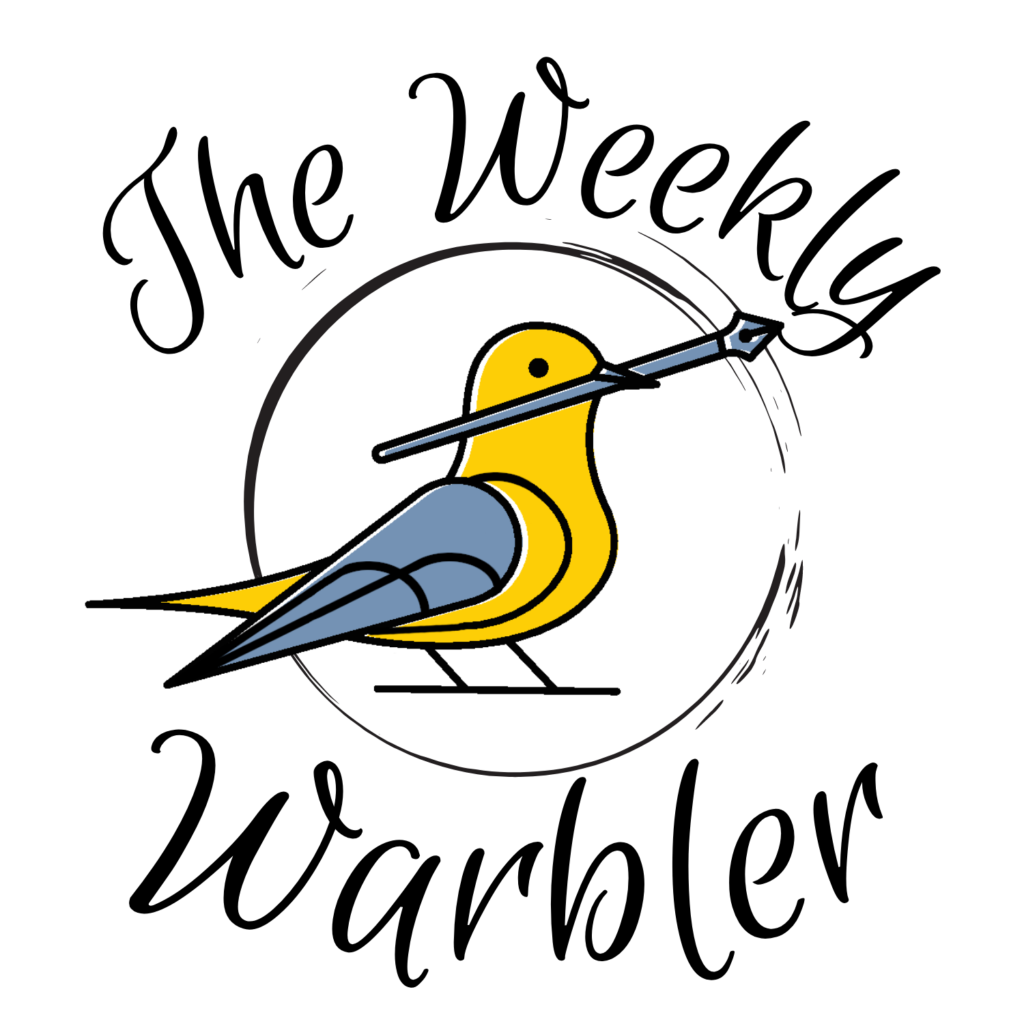Why are albatrosses such special birds?
It’s no secret that I absolutely adore these majestic, goofy, and unique seabirds. They are simply the best, and I’m here to tell you why!
Here are 10 albatross facts that will make you fall in love with them!
1) They Can Live for Over 70 Years
If you don’t know the story of Wisdom the Laysan Albatross (Phoebastria immutabilis), you’re in for a treat. This bird is the oldest wild bird in the entire world. Not even the oldest albatross, just the oldest wild bird ever known. And she is still going strong and raising chicks to this day!

She was captured and banded as an adult in 1956, and actually has outlived the biologist who banded her. She was estimated to be 5 years old when she was banded, the youngest a Laysan Albatross reaches sexual maturity. But she could have been even older, that’s just a conservative estimate. That would put her at at least 71 years old in 2022.
She is somewhat of a celebrity in the birding world, and for good reason.
2) The Wandering Albatross is the Largest Ever Flying Bird
There is another world record holder in the albatross family. The Wandering Albatross (Diomedea exulans) holds the world record for the biggest wingspan of any living bird. The largest confirmed wingspan is 3.7 meters or 12.1 feet. That is taller than a single story house!
While some species of vultures may be heavier than the Wandering Albatross, they still certainly hold that top spot for wing length. Just look how long they are!

Image Source: Paul Carroll on Unsplash
3) They Can Travel 15,000 km Without Stopping
Albatrosses put those elongate wings to good use. They are specially formulated by nature to make use of air currents above the ocean.
To conserve energy, their soaring follows a dynamic arcing pattern which makes use of ocean air currents. They ascend by soaring into the wind, producing lift. When they reach the top of the arc, they turn against the wind to gain momentum on the way down. They then turn into the wind again to produce lift with the momentum they gained from falling.
They can soar like this for incredible distances, and have been known to travel over 15,000 km or around 10,000 miles on a single journey without stopping. Now that’s peak efficiency right there.

Image Source: JJ Harison, distributed under CC BY-SA 3.0
4) They Have the Best Love Stories
Albatrosses are known for being monogamous, and will wait for the same mate every year on their breeding islands. They have adorable mating dances, and form intense bonds with their chosen partner, which is often for life. Talk about couple goals!
Here’s an adorable video of a Laysan Albatross couple dance.
While albatrosses are often the poster child for monogamy, there actually is a lot more going on here. A couple may divorce if their breeding season has failed, which is becoming increasingly common as rising sea temperatures change food availability.
And ‘cheating’ is quite common in albatrosses, where a male or female may sneak off to romance another partner, before returning to their chosen mate. This is quite a common breeding strategy in birds, but generally albatrosses are much less promiscuous than most other birds. They rely heavily on the bond formed with their partner to raise a successful chick.
So while they are not the perfect picture of monogamy some media has painted them to be, nothing is ever as simple as it seems in this world anyways. They still make better couples than many humans do.
5) Same-Sex Couples Are Quite Common
I’m not making this up, here’s some hot fresh science if you don’t believe me. As much as 31% of pairs of Laysan Albatrosses in Oahu were female-female.
The female couples formed bonds, cooperated with chick rearing even though one bird was not genetically related to the chick, and returned the next year to the same mate. They then often ‘switch off’ who gets to lay the egg that year, ensuring they both get the chance to raise their own chick.

Image Source: Kris Krüg, distributed under CC BY-SA 2.0
And if anyone is wondering how they can lay an egg, one of the ‘cheating’ males is likely the culprit. The female couples rely on their female partner for all other aspects of raising a chick.
I try not to anthropomorphize too much, because we can’t make direct parallels to animal and human behavior. We can never know if animals experience the same feelings we do, or if there are just not enough male birds so they make do with a female.
But I still love that these birds have some of the best documented cases of same-sex couples in the animal kingdom. They are truly fascinating!
6) Their Babies Are Extremely Cute
While most animals have extremely cute babies, it’s still a reason to love them all the same. I could look at pictures of baby albatrosses all day!
If anyone is wondering why these babies are fluffy instead of naked like songbirds, it is because albatrosses and other shorebirds, waterfowl, and galliformes are precocial. This just means the babies are born with fluffy down feathers and can walk on their own shorty after birth.

Image Source: Noah Kahn/USFWS, distributed under CC BY 2.0
Songbirds and raptors are altricial, where the babies are born naked and helpless, and make for… well… less cute babies. I think you know what I’m talking about.
7) They Are Majestic and Goofy at the Same Time
Albatrosses are also known as ‘gooney birds’. While no one really knows what that means, I think its just a term of endearment, and maybe a reference to how goofy they can sometimes look.
Here’s a picture of my personal favorite albatross, the Waved Albatross (Phoebastria irrorataI). Tell me they don’t look a bit goofy. They seem to be all beak and no head!
It just makes me love them even more.

Image Source: Andrew Turner, distributed under CC BY 2.0
8) They Are Surprisingly Chill
This one actually surprised me when I found out about it. Since most albatrosses breed on remote islands, they evolved with no natural predators. Over millions of years of not having to worry about becoming lunch, they have become super chill.
They even let strange two-legged creatures take their chicks right out from under them without a squawk! Here’s a video of a ranger monitoring an albatross nest.
Video from Cornell’s BirdCam, the full post can be found here
We find this chill behavior from many birds that evolved on remote islands, such as the famous Galapagos finches. They have no fear and will perch right next to you.
While this is certainly an endearing behavior, when predators are introduced on these remote islands, it can spell disaster for many birds, as it already has for many albatrosses. Rats are a huge problem on some breeding islands, where rats will eat a baby albatross alive, who have no instinct to fight back.
The Gough Island Restoration Programme aims to eliminate rats on Gough Island, a breeding Island for critically endangered Tristan Albatrosses. You can support this program here.
9) They Are Becoming Increasingly Rare
This is more of a sad fact, but its true. The albatross family is one of the most imperiled groups of birds on the planet. 21 of the 22 species of albatrosses are at risk of extinction or near threatened, with half of all albatross species in decline.
Here’s a few main reasons they aren’t doing so good:
- They take a long time to reach sexual maturity (5-11 years in Wandering Albatrosses)
- They only produce one chick on their breeding grounds
- They may wait 2 years before breeding again
- Chicks are very vulnerable to invasive species such as rats
- Increasing ocean temperatures makes it harder for adults to find food
- Chicks die often by plastic ingestion and malnutrition. Find out why birds eat plastic in my article here
- Many adults die in fishing boat accidents when they are not breeding. Read my article on this here

Image Source: Michael Clarke, distributed under CC BY-SA 2.0
So many of the same things I love about them are the cause of their downfall. Large and long-lived animals have a hard time coping with radical changes in the ecosystem that humans bring.
But the more we share their stories, the better albatrosses will fare. Sharing this article, and advocating to slow climate change and reduce single-use plastics are the best things you can do to help these amazing seabirds.
10) They Bring Joy Wherever They Go
Seeing these amazing birds brings so much joy into people’s lives, including mine.
I’ve only ever seen one albatross in my lifetime (UPDATE 2023 – I went to the Galapagos Islands and saw Waved Albatrosses with my very own eyes!). I was at a lighthouse on Kauai before my birding obsession officially began, so the only seabirds I could name were a seagull and an albatross.

I saw on a sign that Laysan Albatrosses frequently visit the area. “Wow… wouldn’t that be cool if I saw an albatross here!” I thought to myself as I scanned the seas. It was early afternoon so I wasn’t really expecting to see anything other than the seagull that was staring at my pretzel.
Not a few minutes later and I saw it. It was unmistakable, simply because of the fact that this bird was HUGE. It swooped right over me without even flapping its wings, making a wide arc before descending down the other side of the cliff, out of view.
I may have screamed, or cried, or both. I don’t quite remember. But what I do remember was that fleeting moment of joy that always accompanies seeing a new type of bird.
Even though I only saw it for a total of 3 seconds, it’s 3 seconds I will always remember. Seeing bird diversity brings so much happiness to people around the world, and that has to count for something.
Let’s keep albatrosses soaring high on the open seas for many more generations to come.
















